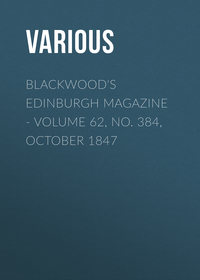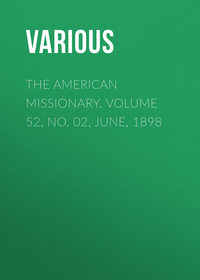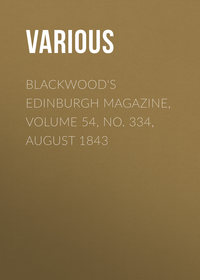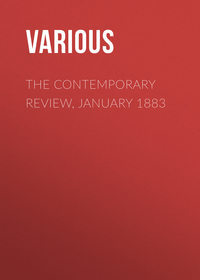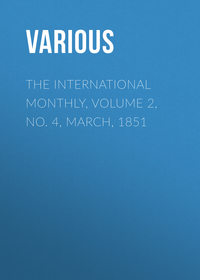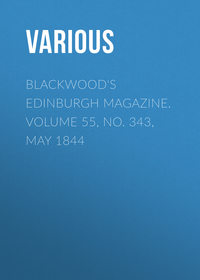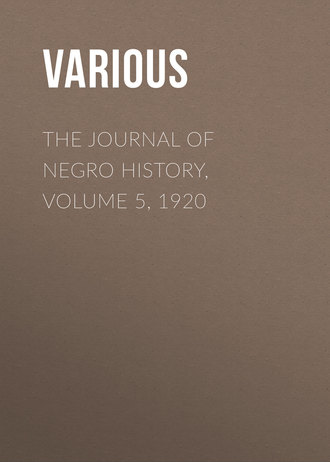 полная версия
полная версияThe Journal of Negro History, Volume 5, 1920
456
From September 8, 1828, to October 19, 1830.
457
Canadian Archives, State K, p. 406.
458
The Statute is (1792) 32 George III, c. 1 (U.C.).
459
Compare the opinion of the Chief Justice of the Supreme Court of the United States in the celebrated Dred Scott case. 19 Howard, 354, pp. 404, 405.
460
See as to this Reginald W. Jeffery, The History of The Thirteen Colonies of North America 1497-1763 (London), p. 190. This interesting work which I have found accurate gives Governor Spotswood as enforcing the Royal decree rigidly.
461
See ante, p.
[5] This is copied from the Canadian Archives, Q. 282, pt. 1, pp. 212 sqq.; taken from the official report sent to Westminster by Simcoe. There is the usual amount of uncertainty in spelling names Grisley or Crisley, Fromand, Frooman, Froomond or Fromond (in reality Vrooman).
The following is a report of a meeting of his Executive Council:
"At the Council Chamber, Navy Hall, in the County of Lincoln, Wednesday, March 21st, 1793.
"Present
"His Excellency, J.G. Simcoe, Esq., Lieut.-Governor, &c., &c.,
The Honble. Wm. Osgoode, Chief Justice,
The Honble. Peter Russell.
"Peter Martin (a negro in the service of Col. Butler) attended the Board for the purpose of informing them of a violent outrage committed by one Fromand, an Inhabitant of this Province, residing near Queens Town, or the West Landing, on the person of Chloe Cooley a Negro girl in his service, by binding her, and violently and forcibly transporting her across the River, and delivering her against her will to certain persons unknown; to prove the truth of his Allegation he produced Wm. Grisley (or Crisley).
"William Grisley an Inhabitant near Mississague Point in this Province says: that on Wednesday evening last he was at work at Mr. Froemans near Queens Town, who in conversation told him, he was going to sell his Negro Wench to some persons in the States, that in the Evening he saw the said Negro girl, tied with a rope, that afterwards a Boat was brought, and the said Frooman with his Brother and one Vanevery, forced the said Negro Girl into it, that he was desired to come into the boat, which he did, but did not assist or was otherwise concerned in carrying off the said Negro Girl, but that all the others were, and carried the Boat across the River; that the said Negro Girl was then taken and delivered to a man upon the Bank of the River by Froomand, that she screamed violently and made resistance, but was tied in the same manner as when the said William Grisley first saw her, and in that condition delivered to the man … Wm. Grisley farther says that he saw a negro at a distance, he believes to be tied in the same manner, and has heard that many other People mean to do the same by their Negroes.
"Resolved—That it is necessary to take immediate steps to prevent the continuance of such violent breaches of the Public Peace, and for that purpose, that His Majesty's Attorney-General, be forthwith directed to prosecute the said Fromond.
"Adjourned."
462
John White was called to the bar in 1785 at the Inner Temple. He practised for a time but unsuccessfully in Jamaica and through the influence of his brother-in-law, Samuel Shepherd, and of Chief Justice Osgoode was appointed the first Attorney General of Upper Canada. It is probable, but the existing records do not make it certain, that it was he who introduced and had charge in the House of Assembly of the bill for the abolition of slavery passed in 1793, shortly to be mentioned. His manuscript diary is still extant, a copy being in the possession of the writer: One entry reads under date Newark Tuesday March 6 1793 "John Young from Grand River came with Mr. MacMichael respecting his runaway negro. Rec'd 5 Dols."
463
The statute is (1793) 33 Geo. III, c. 7 (U.C.). The Parliament of Upper Canada had two houses, the Legislative Council, an upper house, appointed by the Crown; and the Legislative Assembly, a lower house or House of Commons, as it was sometimes called, elected by the people. The Lieutenant Governor gave the royal assent. The bill was introduced in the Lower House, probably by Attorney General White, as stated in last note, and read the first time, June 19. It went to the committee of the whole June 25, and was the same day reported out. On June 26 it was read the third time, passed and sent up for concurrence. The Legislative Council read it the same day for the first time, went into committee over it the next day, June 28, and July 1, when it was reported out with amendments, passed and sent down to the Commons July 2. That house promptly concurred and sent the bill back the same day. See the official reports: Ont. Arch. Reports for 1910 (Toronto, 1911), pp. 25, 26, 27, 28, 32, 33. Ont. Arch. Rep. for 1909 (Toronto, 1911), pp. 33, 35, 36, 38, 41, 42.
464
Canadian Archives, Q. 279, 2, p. 335.
White in his diary says "To the 21 June, some opposition in the House not much"—under date June 25 when the Bill was in Committee of the whole he says "Debated the Slave Bill hardly: Met much opposition but little argument."
465
Simcoe was almost certainly the prime mover in the legislation of 1793. When giving the royal assent to the bill he said: "The Act for the gradual abolition of Slavery in this Colony, which it has been thought expedient to frame, in no respect meets from me a more cheerful concurrence than in that provision which repeals the power heretofore held by the Executive Branch of the Constitution and precludes it from giving sanction to the importation of slaves, and I cannot but anticipate with singular pleasure that such persons as may be in that unhappy condition which sound policy and humanity unite to condemn, added to their own protection from all undue severity by the law of the land may henceforth look forward with certainty to the emancipation of their offspring." See Ont. Arch. Rep. for 1909, pp. 42-43.
I do not understand the allusion to "protection from undue severity by the Law of the land." There had been no change in the law, and undue severity to slaves was prevented only by public opinion. It is practically certain that no such bill as that of 1798 would have been promoted with Simcoe at the head of the government as his sentiments were too well known.
Vermont excluded slavery by her Bill of Rights (1777), Pennsylvania and Massachusetts passed legislation somewhat similar to that of Upper Canada in 1780; Connecticut and Rhode Island in 1784, New Hampshire by her Constitution in 1792, Vermont in the same way in 1793; New York began in 1799 and completed the work in 1827, New Jersey 1829. Indiana, Illinois, Michigan, Wisconsin and Iowa were organized as a Territory in 1787 and slavery forbidden by the Ordinance, July 13, 1787, but it was in fact known in part of the Territory for a score of years. A few slaves were held in Michigan by tolerance until far into the nineteenth century notwithstanding the prohibition of the fundamental law (Mich. Hist. Coll., VII, p. 524). Maine as such probably never had slavery, having separated from Massachusetts in 1820 after the Act of 1780; although it would seem that as late as 1833 the Supreme Court of Massachusetts left it open when slavery was abolished in that State (Commonwealth v. Aves, 18 Pick. 193, 209). (See Cobb's Slavery, pp. clxxi, clxxii, 209; Sir Harry H. Johnston's The Negro in the New World, an exceedingly valuable and interesting work, but not wholly reliable in minutiae, pp. 355 et seq.)
466
Russell became administrator of the Government of Upper Canada, July 21, 1796, and held that position until the arrival of the new Lieutenant-Governor General Peter Hunter, August 16, 1799.
467
Ont. Arch. Rep. for 1909, pp. 64, 69, 70, 71, 75; ibid. for 1910, pp. 67, 68, 69, 70.
The bill was introduced in the Lower House by Christopher Robinson, member for Addington and Ontario. He was a Virginian Loyalist, who in 1784 emigrated to New Brunswick, and in 1788 to that part of Canada, later Lower Canada; and in 1792 to Upper Canada. Accustomed from infancy to slavery, he saw no great harm in it—no doubt he saw it in its best form.
The chief opponent of the bill was Robert Isaac Dey Gray, the young Solicitor General, the son of Major James Gray, a half-pay British Officer. He studied law in Canada. He was elected member of the House of Assembly for Stormont in the election of 1796, and again in 1804.
The motion for the three months' hoist in the Upper House was made by the Honorable Richard Cartwright seconded by the Honorable Robert Hamilton. These men, who had been partners, generally agreed on public measures and both incurred the enmity of Simcoe. He called Hamilton a Republican, then a term of reproach distinctly worse than Pro-German would be now, and Cartwright was, if anything, worse. But both were men of considerable public spirit and great personal integrity. For Cartwright see The Life and Letters of Hon. Richard Cartwright, Toronto, 1876. For Hamilton see Riddell's edition of La Rochefoucault's Travels in Canada in 1795 (Toronto, 1817), in Ont. Arch. Rep. for 1916; Miss Carnochan's Queenston in Early Years, Niagara Hist. Soc. Pub. No. 25; Buffalo Hist. Soc. Pub. Vol. 6, pp. 73-95.
There was apparently no division in the Upper House although there were five other Councillors in addition to Cartwright and Hamilton in attendance that session, viz.: McGill, Shaw, Duncan, Baby and Grant; and the bill passed the committee of the whole.
468
Slaves were valuable even in those days. A sale is recorded in Detroit of a "certain Negro man Pompey by name" for £45 New York Currency ($112.50) in October, 1794; and the purchaser sold him again January, 1795, for £50 New York Currency ($125.00). (Mich. Hist. Coll., XIV, p. 417.) But it would seem that from 1770 to 1780 the price ranged to $300 for a man and $250 for a woman (Mich. Hist. Coll., XIV, p. 659). The number of slaves in Detroit is said to have been 85 in 1773 and 179 in 1782 (Mich. Hist. Coll., VII, p. 524).
469
A number of interesting wills are in the Court of Probate files at Osgoode Hall, Toronto. One of them deserves special mention, viz.: that of Robert I. D. Gray, the first Solicitor General of the Province, whose death was decidedly tragic. In this will, dated August 27, 1803, a little more than a year before his death, he releases and manumits "Dorinda my black woman servant … and all her children from the State of Slavery," in consequence of her long and faithful services to his family. He directs a fund to be formed of £1,200 or $4,800 the interest to be paid to "the said Dorinda her heirs and Assigns for ever." To John Davis, Dorinda's son, he gave 200 acres of land, Lot 17 in the Second Concession of the Township of Whitby and also £50 or $200. John, after the death of his master whose body servant and valet he was, entered the employ of Mr., afterwards Chief, Justice Powell; but he had the evil habit of drinking too much and when he was drunk he would enlist in the army. Powell got tired of begging him off and after a final warning left him with the regiment in which he had once more enlisted. Davis is said to have been in the battle of Waterloo; he certainly crossed the ocean and returned later on to Canada. He survived till 1871, living at Cornwall, Ontario, a well-known character—with him, died the last of all those who had been slaves in the old Province of Quebec or the Province of Upper Canada.
In the Canadian Archives, M. 393, is the copy of a letter, the property of the late Judge Pringle of Cornwall, by Robert I. D. Gray to his sister Mrs. Valentine dated at Kempton February 16, 1804, and addressed to her "at Captain Joseph Anderson's, Cornwall, Eastern District": speaking of a trip to Albany, New York, he says:
"I saw some of our old friends while in the states, none was I more happy to meet than Lavine, Dorin's mother. Just as I was leaving Albany I heard from our cousin Mrs. Garret Stadts who is living in Albany in obscurity and indigence owing to her husband being a drunken idle fellow, that Lavine was living in a tavern with a man of the name of Broomly. I immediately employed a friend of mine, Mr. Ramsay of Albany, to negotiate with the man for the purchase of her. He did so stating that I wished to buy her freedom, in consequence of which the man readily complied with my wishes, and altho' he declared she was worth to him £100 (i.e., $250) he gave her to me for 50 dollars. When I saw her, she was overjoyed and appeared as happy as any person could be, at the idea of seeing her child Dorin, and her children once more, with whom if Dorin wishes it, she will willingly spend the remainder of her days. I could not avoid doing this act, the opportunity seemed to have been thrown in my way by providence and I could not resist it. She is a good servant yet—healthy & strong and among you, you may find her useful, I have promised her, that she may work as much or as little as she pleases while she lives—but from the character I have of her, idleness is not her pleasure, I could not bring her with me, she wanted to see some of her children before she sets out; I have paved the way for her, and some time this month, Forsyth, upon her arrival here will forward her to you...."
Then follows a pathetic touch:
"I saw old Cato, Lavine's father at Newark, while I was at Col. Ogden's; he is living with Mrs. Governeur—is well taken care of & blind—poor fellow came to feel me, for he could not see, he asked affectionately after the family."
In the will of the well-known Colonel John Butler of Butler's Rangers there are bequests to his son Andrew of "a negro woman named Pat": to his grandson John of "a Negro Boy named George … until the said negro arrives at the years that the Law directs to receive his freedom" and to John's sister Catharine "a negro girl named Jane" for a similar time.
470
Michigan Hist. Coll., XIV, p. 659. But the actual effect of the Ordinance of 1787, even after 1805 was not absolute. "As late as 1807 Judge Woodward refused to free a negro man and woman on a writ of habeas corpus, holding in effect that as they had been slaves at the time of the surrender in 1796, there was something in Jay's Treaty that forbade their release." Michigan as a Province, Territory and State, 1906, p. 339. "There is a tradition that even as late as the coming of Gen. John T. Mason, as Secretary of the Territory in 1831, he brought some domestic slaves with him from Virginia. It is not improbable that a few domestic servants continued with their old Masters down to the time of the adoption of the State Constitution" (in 1835) ibid., p. 338, note.
Before Detroit and its adjoining territory were given up by the British to the Americans under Jay's Treaty, August, 1796, there were many instances of slaves escaping from the United States territory to British territory in that neighborhood and vice versa. One instance of escape from British territory will suffice.
Colonel Alexander McKee, a well-known and very prominent Loyalist of Detroit, lost a mulatto slave in 1795 and his friend and colleague Captain Matthew Elliott sent a man David Tait to look for him in what is now Indiana. Tait's success or want of success is shown by his affidavit before George Sharp a justice of the peace for the Western District of Upper Canada residing in Detroit. The whole deposition will be given as it illustrates the terms on which the two peoples were living at the time in that country, and shows that even then the charges were made which were afterwards made one of the pretexts for the War of 1812. It is given in the Mich. Hist. Coll., Vol. XII, pp. 164, 165.
"Deposition
"I being sent by Captain Elliott in search of a Molato man name Bill the property of Colonel McKee, which was thought to be at Fort Wayne, But on my Arrival at the Glaize was inform'd by the officer there that he was gone, they said he had gained his liberty, by getting into their lines he being stole from their Country.
"They abused the Gentlemen in this place very & Told me that Governor Sancom (Simcoe) Colonel England and Captain Elliott caused bills in print to be dropped near their fort, Encouraging their Soldiers to desert.
"They called Coll McKee & Capt Elliott dam'd rasculs and said that they gave the Indians Rum to make them Drunk to prevent them from going to Counsil & That Capt Brent they said was a Dam'd rascul and had done everything in his power against them. But they said in Course of Nine Months that they Expected to be in full possession of Detroit and all the Country between their & it & I begged liberty to withdraw when Major Hunt told me to make the best of my way from Whence I came, while I was getting ready to return the Serjeant of their Guard came & Told me it was the Majors orders that I should leave the place immediately & not to stay about any of the Indian Camps. Which Orders I obeyed.
(signed) David Tait.Sworn before me at Detroit 4th August 1795.
Geo Sharp, J. P. W. D."Indian Affairs, M. G. VII.
471
I have found no reliable accounts of slaves in this region—some traditions which I have investigated proved unreliable and illusory.
472
I cannot trace many Panis slaves in Upper Canada proper; that there were some at Detroit is certain and equally certain that some were at one time on both shores of the Niagara River. I do not know of an account of the numbers of slaves at the time; in Detroit, March 31, 1779, there were 60 male and 78 female slaves in a population of about 2,550 (Mich. Hist. Coll., X, p. 326); Nov. 1, 1780, 79 male and 96 female slaves in a somewhat smaller population (Mich. Hist. Coll., XIII, p. 53); in 1778, 127 in a population of 2,144 (Mich. Hist. Coll., IX, p. 469); 85 in 1773, 179 in 1782 (Mich. Hist. Coll., VII, p. 524); 78 male and 101 female (Mich. Hist. Coll., XIII, p. 54). The Ordinance of Congress July 13, 1787, forbidding slavery "northwest of the Ohio River" passed with but one dissenting voice, that of a delegate from New York was quite disregarded in Detroit (Mich. Hist. Coll., I, 415); and indeed as has been said, Detroit and the neighboring country remained British (de facto) until August, 1796, and part of Upper Canada from 1791 till that date.
473
This is indicated by a number of facts none of much significance and all together far from conclusive—but it is a mere estimate perhaps not much more than a guess and I should not be astonished if it were proved that the estimate was astray by 100 either way. Indeed contemporary estimates gave for the Nassau District alone in 1791, 300 Negro slaves and a few Panis. Col. Mathew Elliott in 1784 brought more than 50 slaves to his estate at Amherstburg.
474
See letter of Sheriff Sherwood, Papers &c., Ontario Historical Society 1901, Vol. 3, p. 107. Justus Sherwood came from Vermont, originally from Connecticut, joined Burgoyne's army in 1777 and came to Canada in 1778, joined Rogers' Rangers and served during the war. He came to Prescott in 1784. He had had a not unusual experience with the Continentals. His "Negro wench and two negroe children" had been seized and "sold to Wm. Drake." (Second Ont. Arch. Rep., 1904, p. 820.) Daniel Jones, father of Sir Daniel Jones of Brockville, came from Charlotte County, New York (ibid., p. 398). He was also a native of Connecticut.
475
He was in full possession of all his faculties and had been brought to Ottawa to prove the death of one person in 1803 and of another in 1814. The action was Morris v. Henderson "Ottawa Citizen" May 3, 1867. Robert I. D. Gray mentioned in note 13 above, came from this district.
476
A Van Alstyne—Major Peter Van Alstyne—was elected to represent Prince Edward County in the first Legislative Assembly when Philip Dorland was unseated because he would not take the prescribed oath being a Quaker.
477
See the interesting paper read before the Women's Historical Society of Toronto by Mrs. W. T. Hallam, B.A., and published in The Canadian Churchman, May 8, 1919, republished in pamphlet form. I am authorized by Mrs. Hallam to make full use of her researches and I take advantage of this permission. Mrs. Hallam has also the following:
"There is an old orchard between Collins Bay and Bath, Ontario, now used as a garden, which belongs to the Fairfield family. The children of this Loyalist family brought the seeds in their pockets from the old home in Vermont, and here lie buried the slaves belonging to the Fairfield and Pruyn families. On the way over they milked the cows, which were brought with them, and sometimes the milk was the only food which they had. The old Fairfield Homestead, built in 1793, is still standing, but the negro quarters are unused, for as those who live there say, "On a hot day you would declare the slaves were still there."
Miss Alice Fairfield of the White House, Collins Bay, a descendant of these Fairfields gives the following account in a paper read before the Woman's Historical Society, Toronto (of which Mrs. Seymour Corley of Toronto has been good enough to furnish me a copy) "In March 1799, Stephen Fairfield married Maria Pruyn (from Kinder Hook, N. Y.), whose marriage portion included several slaves. They remained with the family as a matter of course after the law had given them their freedom. Of their devotion a story is told—"Mott" the old black nurse of my great grandmother walked to York (Toronto) a distance of 160 miles in cold weather to warn her of a plot against her property—the shoes were literally worn off her feet." The writer adds "The Tory branch of the Fairfield family that came to Canada were from Paulet County, Vermont … they brought some 'niggers' as they called their black slaves, into Canada." "The first apples grown in the country were raised from the seeds of apples with which the Children had filled their pockets at the old home."
A contributor to the Napanee Banner writes: "There has been considerable controversy of late whether slaves ever were owned in this section of Canada. The Allens brought three slaves with them who remained with the family for years. Thomas Dorland also had a number of slaves who were members of the house-hold as late as 1820. The Pruyns who lived on the front of Fredericksburg had, we are informed, over a dozen slaves with them. The Ruttans of Adolphustown brought two ablebodied slaves with them. Major Van Alstyne also had slaves; so had John Huyck who lived north of Hay Bay, and the Bogarts near neighbors, and the Trampours of the opposite side of Hay Bay. The Clarks of Ernestown, now called Bath, owned slaves who were with them years after their residence in Canada. The Everetts of Kingston Township and the Cartwrights of Kingston had theirs."
478
A man of considerable note: in 1800 appointed with Richard Cartwright, Commissioner to settle the finances between the two Provinces.
479
Member for Lenox, Hastings and Northumberland Counties in the first Legislative Assembly: and afterwards Sheriff.
480
The Pruyns of Fredericksburg are credited with owning more slaves than any other family in that region. Mrs. Hallam, ut supra, p. 4.
The above extracts are taken from the Registers published by the Ont. Hist. Soc., Vol. 1.
481
Both prominent families in Kingston.
482
Trans. Can. Inst., Vol. 1 (1889-1890), p. 106.
483
For this and the following incident see that most interesting book "Toronto of Old" by Henry Scadding, D.D., Toronto, 1873, pp. 293, 294, 295.






